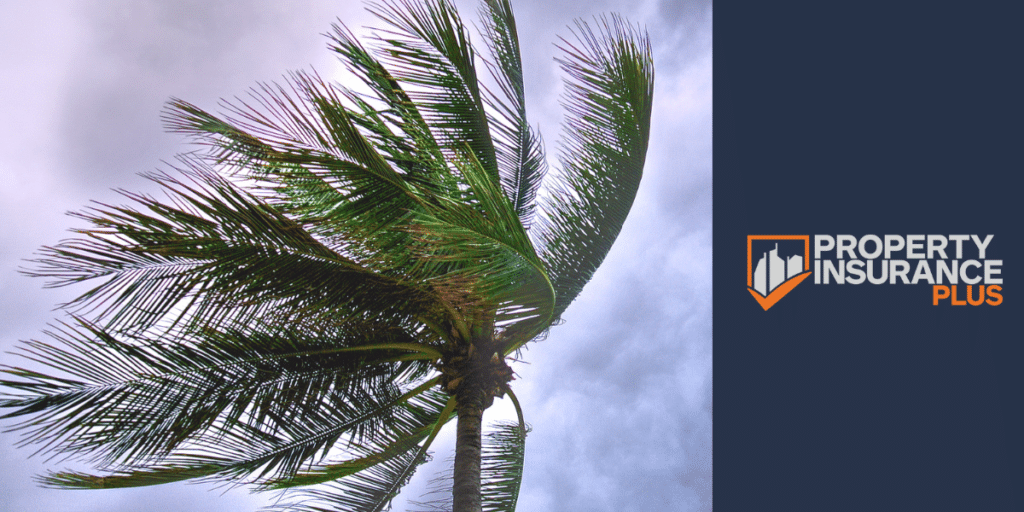We're here for you!
Resources for severe weather claims
MID-NORTH COAST OF NSW:
Persistent and heavy rain has caused significant flooding on the mid-north coast of New South Wales resulting in evacuations of homes. If you are impacted by this or any other severe weather claim, you will find resources to support you.
COVERAGE & EXCESSES
For more information on coverage and excesses, please refer to your Product Disclosure Statement (PDS).
EMERGENCY NUMBER
If you or anyone in your community is in immediate danger, please dial 000 for emergency assistance.

Inspect for Loose Items:
Check your property for loose items such as garden furniture, toys, gas bottles, trampolines, and flags that could be damaged or become dangerous in strong winds or floodwaters. Secure or remove them as necessary to prevent them from being blown away or causing harm.
Tip: Use ropes, straps, or heavy-duty ties to secure outdoor furniture or any items that cannot be moved.Clear Gutters, Downpipes, and Drains:
Ensure all gutters, downpipes, and drains are clean and free from blockages to allow water to flow freely. This can help prevent flooding and water damage during heavy rain.
Tip: Consider placing a fine mesh over drains and downpipes to prevent debris from blocking them during the storm.Trim Overhanging Trees and Branches:
Trim back any overhanging trees or branches that could pose a risk of falling on your home, vehicle, or power lines during strong winds.
Tip: If a large tree near your property seems at risk of falling, consider seeking professional advice on whether it should be removed or reinforced before the storm hits.Secure Roof, Windows, and Shutters:
Check that your roof is in good condition and that all windows and shutters are securely fastened. Storm shutters or plywood can help protect windows from flying debris.
Tip: If you don’t have shutters, boarding up windows with plywood can provide additional protection. Use high-quality tape on windows to reduce the risk of shattering glass.Park Your Vehicle in a Sheltered Area:
If possible, park your vehicle(s) in a sheltered location, such as a garage or under a carport. This can prevent them from being damaged by high winds or flying debris.
Tip: If you don’t have a garage or carport, consider moving your vehicle to a low-traffic area with fewer trees and structures that could pose a risk.Create an Emergency Plan and Kit:
Prepare an emergency plan and ensure that all family members are familiar with it. Your emergency kit should include essentials like water, food, medications, flashlights, batteries, a first-aid kit, important documents, and a portable charger. Keep it in an easily accessible location.
Tip: Don’t forget to pack items for your pets, such as food, water, and any necessary medications. Have a backup power source for essential devices, like a power bank.Stay Updated on Weather Warnings:
Regularly monitor weather updates from reliable sources like the Bureau of Meteorology or your local State Emergency Service (SES). Pay close attention to evacuation warnings and other critical information.
Tip: Set up weather alerts on your phone to receive real-time warnings so you can act quickly if needed.
Stay Indoors and Away from Windows:
Remain inside your home at all times during the storm, and avoid going near windows or glass doors, as strong winds or debris could cause them to shatter.
Tip: Move to an interior room or hallway if possible, especially if you don’t have a sturdy storm shelter.Seek Shelter Indoors if You’re Outside:
If you’re caught outside, immediately head indoors. Stay away from areas prone to flooding, such as near trees, drains, gutters, creeks, or waterways, as these can pose additional hazards during heavy rain and strong winds.
Tip: If you’re caught in open spaces, try to find a sturdy building or structure to shelter in, avoiding weak structures that may collapse.Driving Safety:
While driving, be extremely cautious. Watch for fallen trees, debris, and flooding on the roads. Never seek shelter under trees, as they can be dangerous during strong winds.
Tip: If conditions worsen, pull over to a safe, sheltered location, like a petrol station or sturdy building. Always avoid parking under power lines or large trees.If Driving Becomes Too Dangerous:
If the weather conditions become too hazardous to drive, pull over and stop immediately. Park your vehicle in a safe location and keep your seatbelt on while you wait for conditions to improve.
Tip: When parking, position your vehicle with the reinforced front windscreen facing into the storm. This helps minimize potential damage from hail or flying debris.
- Inspect Your Property for Damage:
Carefully assess your property for any damage. - Document Damaged Items:
If you have items that will be part of your claim, take clear photos or videos and record the model numbers. - Dispose of Spoiled Food:
If you’ve lost power and your fridge isn’t cooling, discard any perishable food that may have spoiled. - Avoid Hazardous Areas:
Stay clear of dangerous areas like downed power lines, damaged roads, and floodwaters to prevent further risks. - Stay Informed:
Check your state emergency services or local news regularly for important safety updates and recommendations.
- Submit Your Claim:
Complete our easy online claim form , and we’ll arrange temporary repairs to prevent further damage. - Document Your Damaged Items:
While you begin cleaning up and we finalize the details, take photos and note the model numbers of any items you’re claiming for. - Assess the Damage:
We’ll work with you to evaluate the extent of the damage and create a list of necessary repairs. As work progresses, we’ll update the list if additional repairs are identified. - Prepare for Repairs:
Once the repair list is finalized, our builder will confirm the start date, and we’ll keep you informed every step of the way.
- Go to Bureau of Meteorology website for up to date weather warnings
- For power outage information, go to your provider’s website.
- In a life-threatening emergency, call Triple Zero (000)
- For emergency assistance call the SES on 132 500
We're here to support you
Our team understand how overwhelming it can be to deal with the aftermath of a natural disaster. Rest assured, we are committed to supporting you every step of the way as you begin to recover. Our team is ready to assist you with your property insurance claims.
Why lodge a claim online?
The quickest and easiest way to submit a claim is online. We’ve streamlined the process to ensure you can get the help you need as fast as possible. Simply visit our claims portal and follow the easy steps to submit your details.
Quick & Convenient
Submitting your claim online is the fastest way to get started on the road to recovery.
24/7 Availability
You can submit your claim anytime, day or night, from the comfort of your home.
Direct Assistance
Our claims team will begin processing your request as soon as it's received, ensuring timely support.
Handy tips for clean up
Before starting to clan up, take pictures or videos of damage to the property and possessions as evidence for your claim.
- Keep samples of materials and fabrics to show your insurer.
- Remove damaged goods from your property that might pose a health risk, such as saturated carpets and soft furnishings.
- Make a list of each item damaged and include a detailed description, such as brand, model, and serial number if possible.
- If water has entered the property, do not turn on your electricity until it has been inspected by an electrician.
- Store damaged or destroyed items somewhere safe where they do not pose a health risk.
- Mitigate further loss or damage by having any necessary emergency make safes undertaken and submit the invoice as part of your claim. Please be aware that costs are only accepted by the insurer if the claim is accepted.
- Do not throw away goods that could be salvaged or repaired.
- Speak to your insurer before you attempt or authorise any building work, and ask for the insurer’s permission in writing. Unauthorised work may not be covered by your policy.
FAQ's
During catastrophe events we see increases in enquiries & new claim lodgements, as well as a greater need to appoint assessor and builders. As such, our turnaround times may be slightly longer than usual.
The quickest and easiest way to submit a claim is online. We’ve streamlined the process to ensure you can get the help you need as fast as possible. Simply visit our claims portal and follow the easy steps to submit your details.
Resource Hub
- Checklist of what to do if your property has been impacted
- For more information on coverage and excesses, please refer to your Product Disclosure Statement (PDS)
- Up to date weather information is on the Bureau of Meteorology
- Resources for those experiencing family violence
- Resources for those experiencing financial hardship
Questions?
Feel free to call us 1300 307 072.

Lodge a claim online
The quickest and easiest way to submit a claim is online. We’ve streamlined the process to ensure you can get the help you need as fast as possible. Simply visit our claims portal and follow the easy steps to submit your details.
Emergency Assistance
If you or anyone in your community is in immediate danger, please dial 000 for emergency assistance.
Contact Us
If you are unable to complete a quote using the above links, or have a question relating to which property insurance product is right for you, please contact us here
Property Insurance Plus
- insurance@pi-plus.com.au
- PO BOX 8022 Cloisters Square PO WA 6850
- 1300 307 072
Get In Touch
Be certain you’re covered in the worst-case scenario with tailored property insurance solutions from Property Insurance Plus. Explore our range of options and get in touch with us today for a quote.
Fill out the form with any questions you have about finding which property insurance is right for you!
Contact Us
"*" indicates required fields